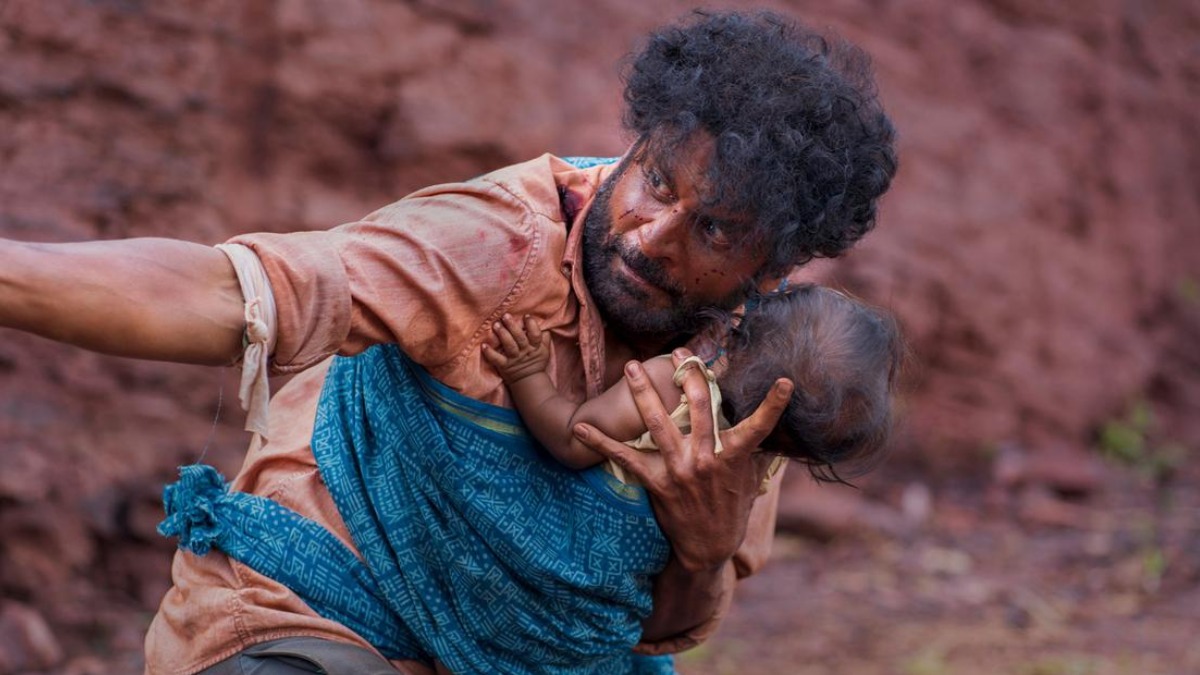Joram keeps the audience on edge with its gripping tale. The movie, directed by Devashish Makhija, takes the viewers through a maze of mystery, violence, and moral dilemmas. As the film progresses, we follow the lives of two central characters.
These are Dasru, a role portrayed by Manoj Bajpayee with great depth, and the determined police inspector Ratnakar, played by Mohammad Zeeshan Ayyub. Dasru lives with his wife, Vaano, and their young daughter, Joram, in a small tribal village located in Jharkhand.

With tensions rising in the community due to socio-political unrest, he has no choice but to leave his home in search of safety in Mumbai. Tragedy strikes when his wife is killed, forcing him to flee with his three-month-old daughter, leaving behind a painful past.
The story of Joram plays out against the backdrop of Jharkhand’s tribal communities, who are grappling with displacement, exploitation, and the impacts of modernization. The movie concludes with an emotional ending that invites the viewer to reflect deeply on the themes of loss, justice, and survival.
Why Does Phulo Karma Want Dasru Dead?
Phulo Karma (played by Smita Tambe) is a powerful tribal politician, driven by personal vengeance against Dasru. She manipulates the already tense situation to push her political agenda.
The film brings out moments where the viewer is left anxiously anticipating what will happen next, especially as the line between activism and exploitation is blurred. Phulo Karma’s attempt to kill Dasru showcases the power dynamics at play, forcing him to run for his life.
After the mysterious death of Vaano, the media labels Dasru a terrorist, further complicating his survival. Dasru is then thrust into a desperate chase, fleeing through the rough streets of Mumbai, a city known for its harsh realities and underbelly.
The final scenes of Joram see Dasru returning to his tribal village in Jharkhand, seeking solace from the chaos he endured in Mumbai. However, his return home does not bring the peace he had hoped for. He quickly discovers that his past has followed him, and he is haunted by the shadows of his former life.
The film’s flashbacks trace Dasru’s transformation from a confused member of a naxal group to a construction worker struggling to survive in the vast urban space of Mumbai.
Inspector Ratnakar’s Pursuit and the Deeper Meaning of Justice
Inspector Ratnakar, the relentless cop chasing Dasru, adds a layer of complexity to the movie. His pursuit mirrors Dasru’s journey, and through their intertwining paths, the film illustrates how law enforcement can sometimes perpetuate systemic injustices.

Mohammad Zeeshan Ayyub’s portrayal of Ratnakar brings depth to the story, making it difficult to draw a clear line between the antagonist and antihero, showing that justice is often more complex than it seems.
How Does the Manoj Bajpayee Movie End?
The climax of Joram occurs in a mine, a setting that symbolizes the profound despair and internal conflicts the characters face. The intense confrontation between Dasru, Ratnakar, and Phulo Karma becomes a raw assessment of power, justice, and the price of survival in a society plagued by corruption and inequality.
The film leaves the audience questioning justice, morality, and the cyclical nature of violence. Makhija’s storytelling does not merely provide a thrilling cinematic experience; it also offers a piercing commentary on the socio-political struggles in modern India.
As the credits roll, viewers are left reflecting on the devastating consequences of displacement, the exploitation of tribal communities, and the far-reaching impact of corruption on the lives of ordinary people.
Joram stands as a testament to Makhija’s exceptional storytelling. It uses a strong story, compelling characters, and vivid scenes to shine a light on the harsh realities faced by marginalized communities, all while keeping viewers at the edge of their seats until the very end.



